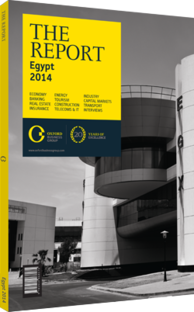The introduction of unified licences will expand market opportunities and establish a new mobile operator
On September 3, 2014, the Egyptian government approved the activation of unified fixed-line and mobile telecoms licences after years of discussion. The National Telecommunication Regulatory Authority (NTRA) hopes to have a telecoms sector with four players holding identical unified licences, allowing them to provide both mobile and fixed-line services in a market that will be strongly based on multi-play bundles.
The government’s final approval of legislation allowing unified licences is undoubtedly one of the most significant events in the telecoms sector in recent years. It is expected to have a considerable impact on the market as a whole, as well as Telecom Egypt (TE) as a company, as the change makes it possible for the legacy operator to launch its own mobile network. The NTRA and others emphasise that the launch of unified licences is intended to increase market opportunities for all players, including the existing mobile operators, which can now offer fixed-line services through TE’s network. But initially at least, the main effect will be to allow TE to enter what is already a competitive mobile market. The licence issue effectively obliges TE to either sell its stake in Vodafone Egypt or take full control of the company, and fires the starting gun for the development of fourth-generation (4G) networks in Egypt.
License Structure
TE had already agreed to pay LE2.5bn ($355m), plus a 6% revenue share, for a unified licence in May 2014, and was waiting on the legislation to be finalised. The structure of the licence gives TE an “add-on”, allowing it to launch a mobile operator on a platform similar to a mobile virtual network (MVNO) operator – that is, one that uses the spectrum and infrastructure of other networks or independent companies, rather than its own. This licence becomes part of TE’s operating licence, which runs until 2020, and both will be renewed simultaneously.
Although the unified licence will cost LE2.5bn ($355m) for TE, the existing mobile operators will have to pay just LE100m ($14.2m) for unified licenses of their own, allowing them to use TE’s fixed-line services. Whether any will do this is still unclear, given the legacy operator’s commanding position on the fixed-line markets, as well as the challenges presented by starting to offer double- and triple-play bundles. In order to access fibre, the operators will have to rent this from TE or establish their own network using the new national telecoms infrastructure company.
Strategy
TE’s mobile provider will effectively operate as an MVNO, though telecoms experts say the term is more specific than media coverage has implied. TE will lease spectrum from existing operators, while using its own backbone infrastructure. The new operator is initially expected to put an emphasis on providing bundled offers to existing TE fixed-line and internet customers, who are familiar with the brand and with whom the company already has an established marketing channel. The company has 7m household subscribers for its services, with an average of five people per house, according to Ahmed Adel El Kassaby, an analyst at Cairo-based financial institution HC Securities, giving the new mobile operator immediate access to 35m people. The focus on double- and triple-play will help support healthy margins, according to HC.
The new mobile service is expected to be generating earnings before interest, taxes, depreciation and amortisation of LE337m ($47.9m) by 2019. Indeed, TE’s mobile expansion, with millions of new subscribers expected in the first few years of operation, should see it become a leading driver of subscription growth.
HC expects TE to account for 29.2% of new subscriptions in its first year of operation, rising to 38.3% in 2016, 47.5% in 2017 and 52.6% in 2018, before dipping below 50% again as the market as a whole gets closer to 100% real penetration. Despite these new revenues, the rise in competition for international connectivity is expected to have an impact on TE, which generates 70% of its wholesale earnings from international traffic. The full liberalisation plan should be implemented by 2018, with all four operators sharing the same licence and having stakes in the national infrastructure company.
You have reached the limit of premium articles you can view for free.
Choose from the options below to purchase print or digital editions of our Reports. You can also purchase a website subscription giving you unlimited access to all of our Reports online for 12 months.
If you have already purchased this Report or have a website subscription, please login to continue.

